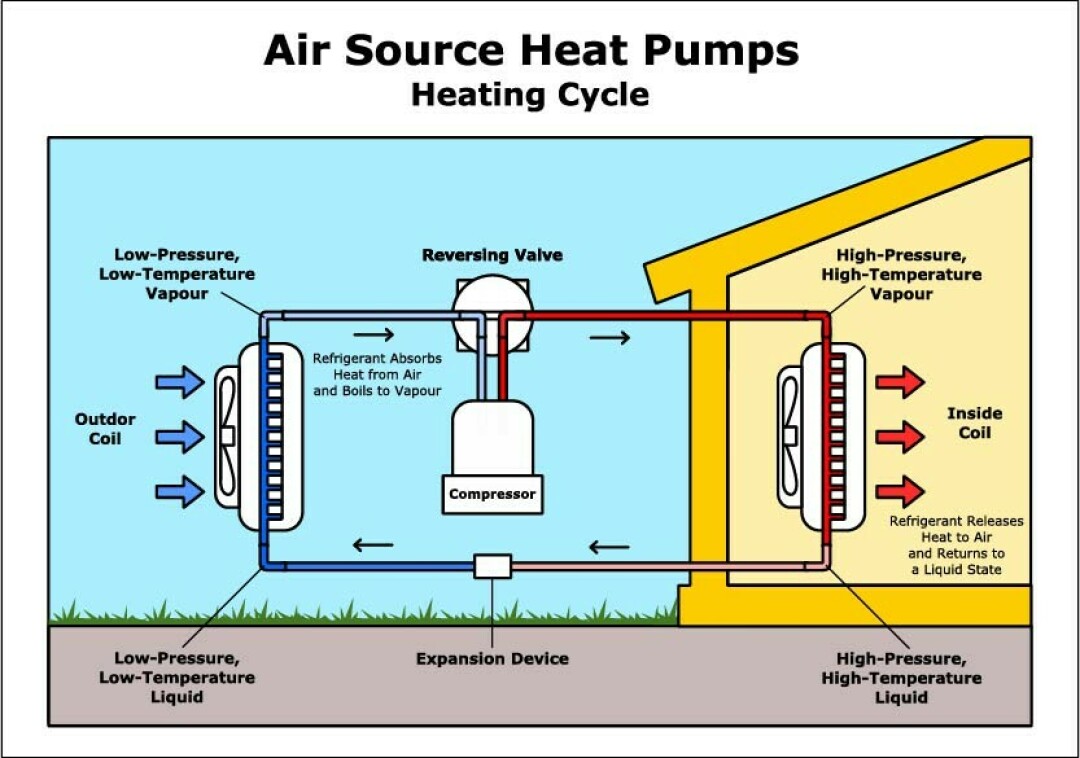How to build a fossil-free Duluth: Heat pumps, part 1

Natural gas is mostly methane or CH4 but it contains almost 300 additional volatile organic compounds. Twenty-one of those compounds are dangerous to our health like benzene and toluene which can cause cancer.
Unfortunately, those compounds are not bottled up safely in the tubing in our homes and the vast distribution system for natural gas. The gas leaks in our homes through gas ranges and other appliances and these compounds negatively impact our health.
While gas furnaces, water heaters and clothes dryers are vented outside, gas ranges are frequently vented inside the house. The high heat of the flame causes nitrogen in the air and oxygen to form nitrogen oxides, a serious pollutant. These compounds build up to dangerous levels in just a few minutes of range use in a small kitchen. Many cases of childhood asthma are related to natural gas use in a home.
Natural gas is also not healthy for the planet. When you burn coal or oil, you basically get carbon dioxide and water. Natural gas, however, is a volatile gas which leaks from the wellhead to the gas appliance, indeed the lowly gas range leaks 1% of the natural gas, even when not in use.
That leaked methane is 80 times more powerful as a greenhouse gas than if it had been burned and turned into carbon dioxide and water. After 20 years that leaked methane, known as fugitive emissions, is partially combusted but is still 36 times more powerful 100 years out from the initial leak.
Even when there is only a 2% fugitive emission rate across the entire system, the greenhouse effect of the methane is 1.6 times the carbon dioxide emitted from burning the other 98% of the natural gas. In some ways, it would be better to burn coal.
This explains why the federal government is so focused on stopping these emissions and why we need to be so determined to rid our economy of natural gas.
Ask a Northlander about the ways to heat a home and most will only mention familiar forms of carbon such as wood, coal, fuel oil, propane or, natural gas. However, home energy use simply doesn’t need highly concentrated forms of energy.
All of the usual household temperatures needed can be attained with electri-fication; and electricity is increasingly generated from carbon-free sources such as solar, wind, nuclear and geothermal.
Let’s go through what appliances can now be electrified, starting with the kitchen range. Gas ranges have a very loyal following. Plans in some cities to get rid of natural gas have foundered on restaurant chef’s opposition to losing gas for cooking.
However, the induction stove, according to a growing number of chefs and foodies, offers advantages to gas. The induction stove heats by electromagnetically heating the cooking pot or skillet rather than heating the air around the skillet or radiating heat to it.
High power and instantaneous temperature adjustments are hallmarks of the induction stove but the kitchen remains much cooler. This would be a welcome improvement for restaurant staff. Induction ranges or simple cooktops are now available for home and commercial use.
The other three appliances (gas dryers, gas water heaters and gas furnaces) can be replaced directly with electric appliances, but the most efficient way to produce the heat these appliances need is through a heat pump.
Heat pumps are almost magical in their ability to move heat with a fraction of the electricity used by a typical electric appliance.
Heat pumps have two ends. One is getting colder while the other end is getting hotter.
The Miele dryer, for instance, uses the hot side to warm up the clothes and absorb the water vapor. Then, the magic begins. The humid warm air is then cooled by the cold side of the heat pump and it starts to rain, just like when a cold front slams into a warm front in the summer.
The now dried air goes over to the hot side and is warmed up and the cycle starts all over. No need for a hole in your wall for a vent.
Gas water heaters and furnaces both have heat pump alternatives. The quickest to implement are heat pumps that extract heat from the atmosphere. Cold climate air-source heat pumps can now continue to pull heat at temps outside below zero but eventually begin to falter if temps drop below -13 F.
The Holy Grail of heat pumps, combining the waste heat of industry with the massive latent heat of the earth so as to be impervious to atmospheric changes, is networked geothermal; but, that is the subject of the next article.
Dr. Eric Enberg practices family medicine in West Duluth and is the group leader of the Citizens’ Climate lobby (citizensclimatelobby.org/chapters/MN_Duluth) He is also a member of the Duluth Climate and Energy Network (DCEN)